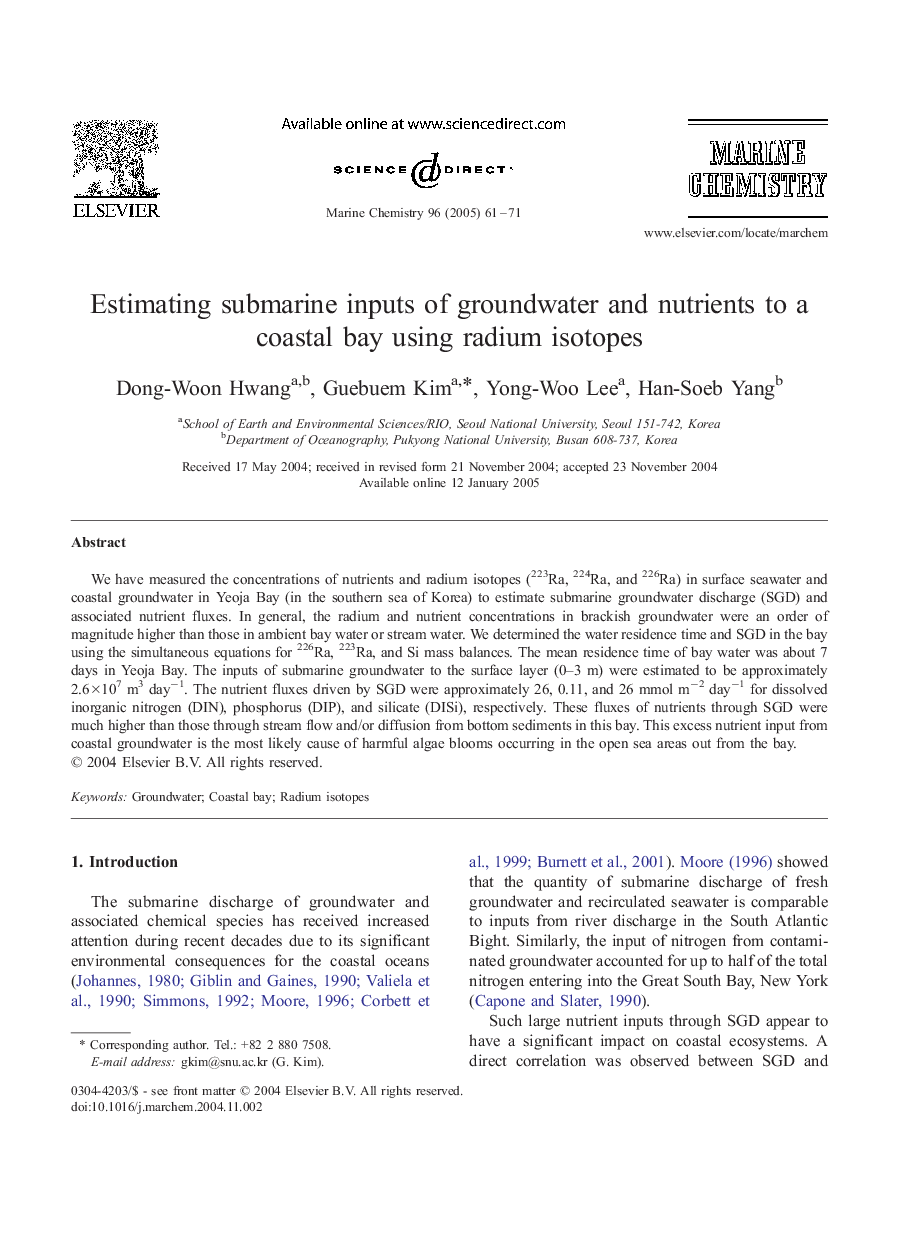| Article ID | Journal | Published Year | Pages | File Type |
|---|---|---|---|---|
| 9758372 | Marine Chemistry | 2005 | 11 Pages |
Abstract
We have measured the concentrations of nutrients and radium isotopes (223Ra, 224Ra, and 226Ra) in surface seawater and coastal groundwater in Yeoja Bay (in the southern sea of Korea) to estimate submarine groundwater discharge (SGD) and associated nutrient fluxes. In general, the radium and nutrient concentrations in brackish groundwater were an order of magnitude higher than those in ambient bay water or stream water. We determined the water residence time and SGD in the bay using the simultaneous equations for 226Ra, 223Ra, and Si mass balances. The mean residence time of bay water was about 7 days in Yeoja Bay. The inputs of submarine groundwater to the surface layer (0-3 m) were estimated to be approximately 2.6Ã107 m3 dayâ1. The nutrient fluxes driven by SGD were approximately 26, 0.11, and 26 mmol mâ2 dayâ1 for dissolved inorganic nitrogen (DIN), phosphorus (DIP), and silicate (DISi), respectively. These fluxes of nutrients through SGD were much higher than those through stream flow and/or diffusion from bottom sediments in this bay. This excess nutrient input from coastal groundwater is the most likely cause of harmful algae blooms occurring in the open sea areas out from the bay.
Related Topics
Physical Sciences and Engineering
Chemistry
Chemistry (General)
Authors
Dong-Woon Hwang, Guebuem Kim, Yong-Woo Lee, Han-Soeb Yang,
